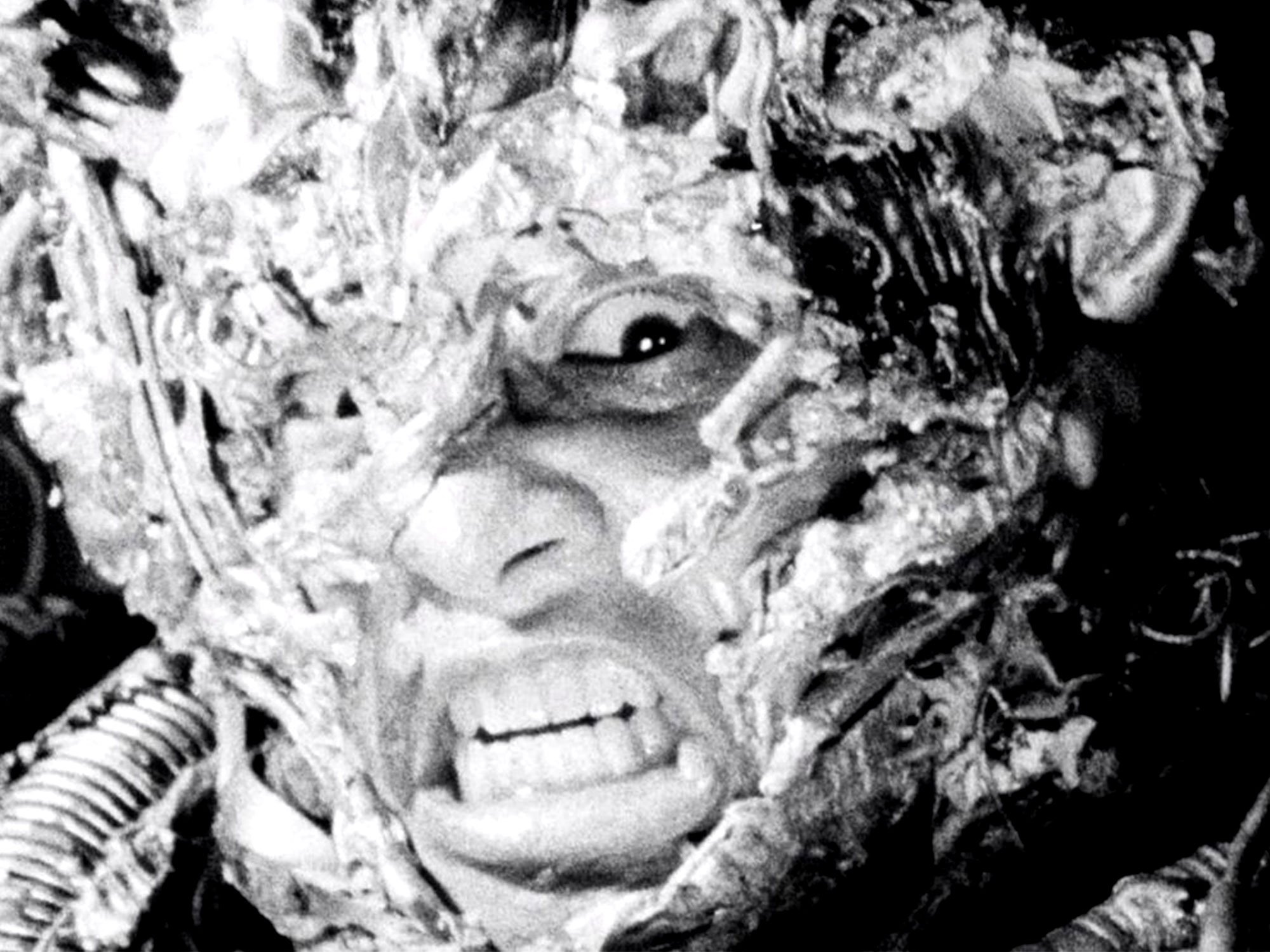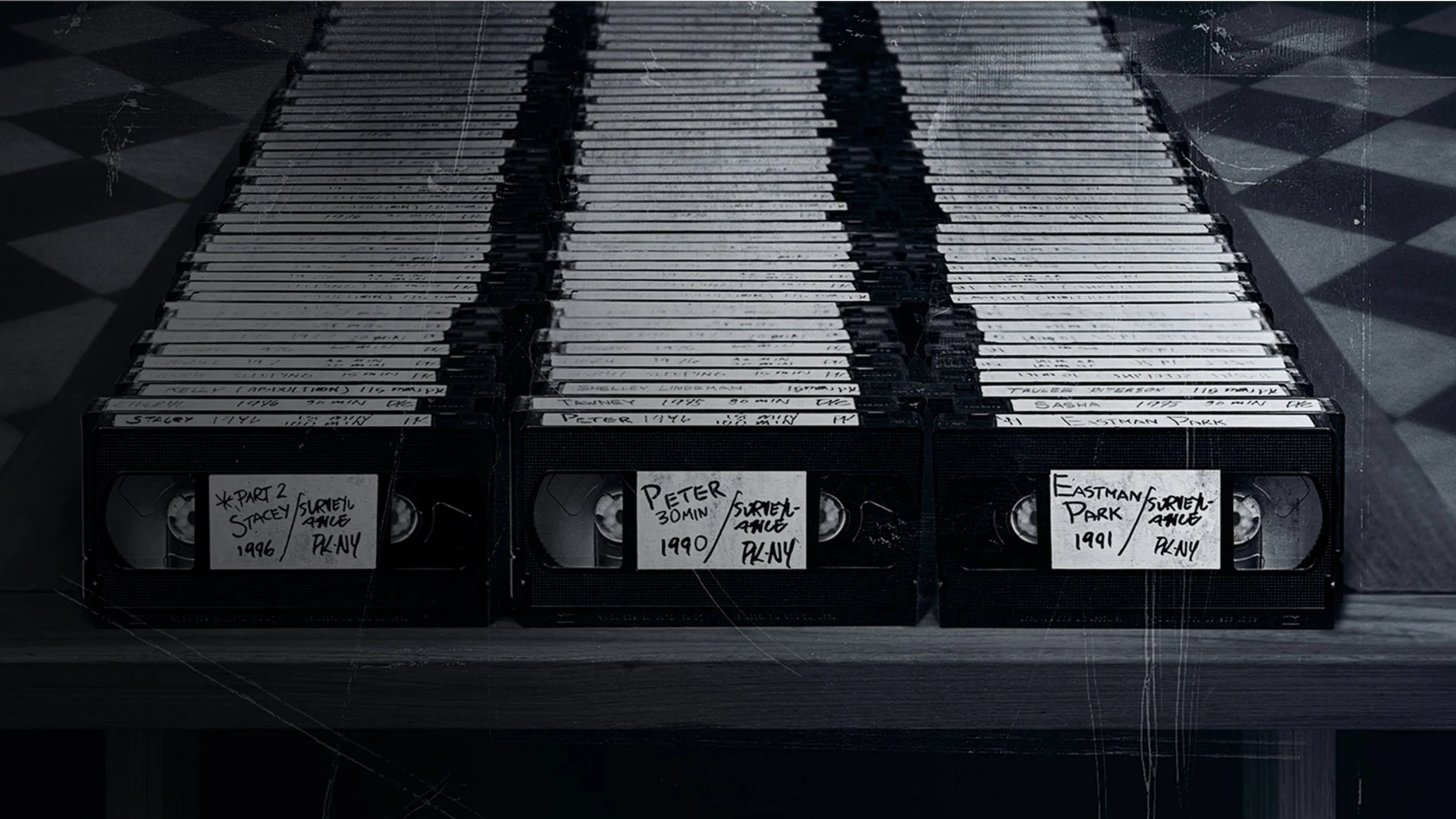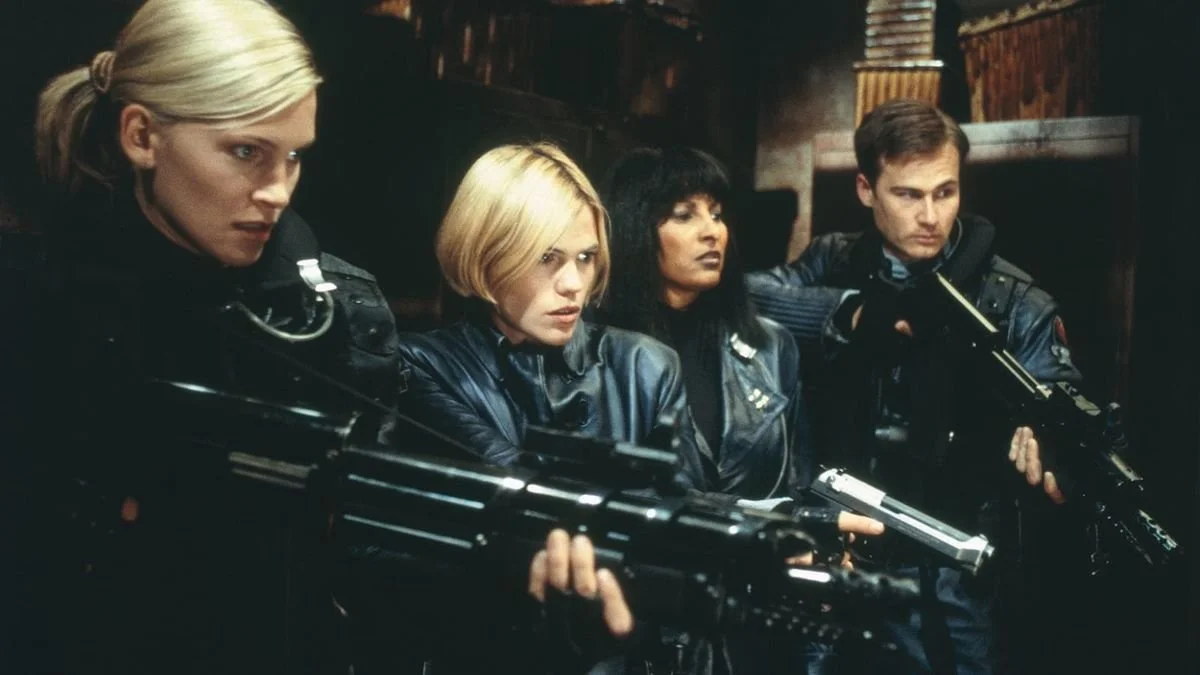Halloween Horror: Tetsuo: The Iron Man (1989)
Tetsuo: The Iron Man is a hallucinogenic nightmare, a wet dream made by a mad man. It’s disgusting and provocative, the type of film that pushes well past the boundaries of good taste in an effort to disorient and unnerve the viewer. It’s not the sort of film you enjoy unless you have tastes you shouldn’t discuss in public. But if we’re to grade a horror film on its ability to make the audience uncomfortable, Tetsuo: The Iron Man is a bewildering success.
The discomfort starts right off the bat in Shinya Tsukamoto’s film. We watch as a man (Shinya Tsukamoto himself) slices into his leg in an apartment and inserts a metal rod into the open wound. He runs into the streets, sprinting like the athletes whose posters decorate his apartment, and is hit by a car. The film cuts to a salaryman (Tomorowo Taguchi) who seems tormented by visions of metal. While shaving, he discovers a small metal spike growing on his cheek and tries to hide it with a bandage. He goes about his day, but metal monstrosities seem to bleed into his ordinary daily encounters and start to corrupt his physical body.
The connection between these two individuals is not obvious at first, whether one is real and the other fake, or whether one man is meant to be a version of the other. But there is a psychological and, eventually, material drift here, one that proceeds as the salaryman is slowly consumed by a metal growth and loses control of himself and his sexual urges. His relationship with his girlfriend descends into violent sexual dominance, and his body is mutated beyond recognition. Man becomes machine, like a cyberpunk variation on David Cronenberg’s Videodrome.
Tetsuo: The Iron Man is shot in black and white in 16mm and takes advantage of ingenious, micro-budget craftsmanship on the part of Tsukamoto, who did the special effects himself, in addition to writing, producing, directing, editing, DPing, and starring in the work. The visual effects, with their rebar, chrome paint, and claymation appendages, mimic a cancerous growth on the salaryman’s body, swelling his mass with each successive mutation, until he’s like a metallic version of Tetsuo in Katsuhiro Otomo’s Akira (he probably borrowed the name as a homage).
Tsukamoto edits with a hallucinatory precision, with stuttering frames, jump cuts, and long sequences of no dialogue and little more than Chu Ishikawa’s percussive score or sensory sound effects, such as metal scraping or gasps of pain, as the background noise. At several points during the film we watch the salaryman race through the Tokyo streets, with Tsukamoto utilizing time-lapse and stop-motion to replicate the salaryman’s disorientation and energetic breakdown and make him seem like he’s jumping through time and space.
The film has the sort of editing that would become known as “MTV style” in the 1990s, as music video directors brought the underground style into the mainstream. But in 1989, when Tetsuo: The Iron Man came out, it must have been overwhelming for whatever viewers were able to see this underground film in theatres. It’s also clearly inspired by David Lynch’s Eraserhead and shares with it an inexpressable artistry, one borne of intuition and nightmare. As well, you can see how it’s a touchstone for Darren Aronofsky’s Pi. (Aronofsky seems to have a knack for ripping off Japanese cinema.)
To be clear, the imagery in Tetsuo: The Iron Man is less surreal than in Eraserhead. It’s more driven by clear Freudian obsessions, which culminate in the salaryman’s penis turning into a drill and sawing through his coffee table with violent precision as he is overwhelmed by lust for his girlfriend. Yes, you read that correctly. This is what happens in Tetsuo: The Iron Man, a film that weaponzies the human body and twists human emotions and externalizes them through horrifying metallic augmentation. It will make you squirm and shake and make your jaw drop. If you’re squeamish, good luck. If you don’t like blood, just be glad it’s black and white.
The film is not enjoyable for its content, but as a work of body horror, it’s masterful at getting under your skin, poking and prodding in places where you least expect. Some moments are hilarious, surely playing for laughs considering the audacity of the imagery. Other moments are disgusting, verging on sadistic or pornographic if they didn’t have such a haunting artistic purpose behind them.
Tetsuo: The Iron Man is not for the faint of heart, nor is it for your typical horror movie viewer. But for those willing to glimpse into the mind of madness and see how far the concept of body horror can be taken, it’s a rewarding, if grueling, trip.
8 out of 10
Tetsuo: The Iron Man (1989, Japan)
Written and directed by Shinya Tsukamoto; starring Tomorowo Taguchi, Kei Fujiwara, Shinya Tsukamoto.



Kiyoshi Kurosawa’s 2001 J-horror film predicted the new millennium in terrifying ways.